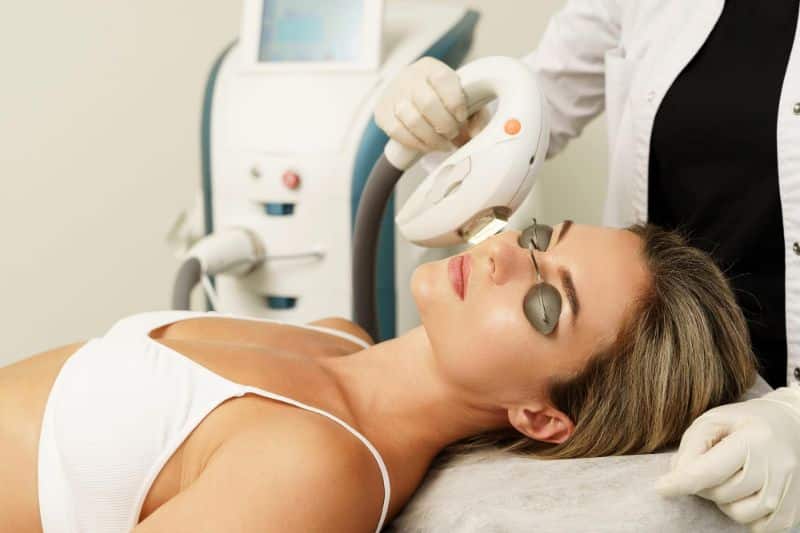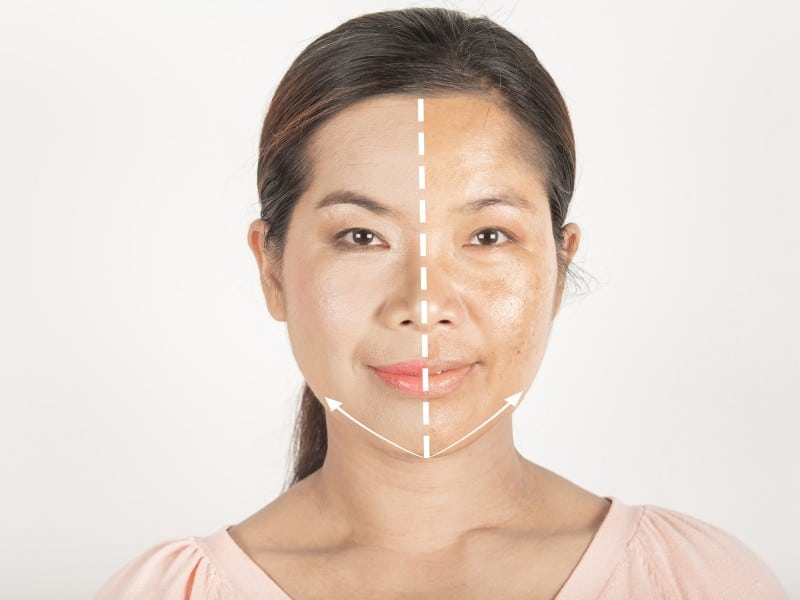Medical condition
Melasma
What Is Melasma?
Lorem ipsum dolor
Melasma is a skin condition where dark patches or spots appear on the face. It happens more often in women and is linked to factors like genetics, hormones, and sun exposure. The patches are usually brown or greyish-brown and have a clear border. While it doesn’t cause physical harm, it can affect self-confidence.


Which treatments are available?
Book in for a skin consultation with Dr Tina for an individualised treatment plan. Your best treatment will often depend on your age, gender, triggers and causes of your condition.
Dr Tina can advise on a combination including:
- Skin care advice
- Topical therapy
- Oral treatment
- Chemical peels and lasers
- Alpha-hydroxy acids (AHA) like glycolic acid or beta-hydroxy acids (BHA)
- RF Microneedling, IPL, and various lasers (such as Q-switched Nd:YAG).
What We Improve
Skin texture
Our services may support patients seeking to address concerns related to uneven skin texture or visible skin irregularities.
Skin tone
For individuals noticing changes such as pigmentation irregularities or sun-related changes, a consultation can help determine appropriate treatment options.
Non-surgical approach
We offer non-surgical treatments that are designed to be low in invasiveness and typically require minimal recovery time. Suitability is determined on a case-by-case basis.
Consultation-led care
Some treatments involve the use of naturally derived acids, which may support skin renewal. This is discussed during a thorough consultation with a qualified health professional.

Aftercare Instructions for Rosacea
Lorem ipsum dolor
Key Information
Costs and product suitability are discussed only during your Initial cosmetic consultation with Dr Tina Fang. This ensures that all recommendations are tailored to your individual needs and medical history.
The consultation fee $120. It is fully redeemable towards any treatment or skincare product if clinically suitable and selected during your appointment.

Key Information
Can Melasma be prevented?
While it may not be possible to completely prevent melasma, there are measures that can help reduce the risk and minimize its occurrence or severity. Here are some preventive strategies
- Protect your skin from the sun by wearing a hat, seeking shade, and using a broad-spectrum sunscreen with SPF 30 or higher.
- Try to avoid excessive sun exposure, especially during the peak hours of 10 am to 4 pm.
- Discuss the potential risks of hormonal treatments with Dr Tina if you're prone to melasma.
- Be cautious with cosmetics and scented products that may trigger melasma.
- Properly manage underlying conditions like thyroid disorders if you have them.
What are the available treatment options for Melasma?
A combination of approaches is typically needed to manage Melasma effectively.
General measures:
- Protecting the skin from the sun all year round using a broad-brimmed hat and a high SPF sunscreen with broad-spectrum protection.
- Consider discontinuing hormonal contraception if possible.
Topical therapy:
- A successful treatment combination includes hydroquinone, tretinoin, and a moderate-potency topical steroid (skin lightening cream), which has shown improvement in 60-80% of cases.
- Other topical agents like azelaic acid, kojic acid, cysteamine cream, ascorbic acid, methimazole, tranexamic acid, glutathione, and soybean extract can be used alone or in combination.
Oral treatment:
- Tranexamic acid is an oral medication that can help inhibit factors involved in melasma by blocking certain processes.
Procedural techniques:
- Chemical peels and lasers can be used with caution, but there is a risk of worsening melasma or causing post-inflammatory hyperpigmentation.
- Pretreatment with a tyrosinase-inhibitor like hydroquinone is recommended.
- Alpha-hydroxy acids (AHA) like glycolic acid or beta-hydroxy acids (BHA) like salicylic acid can help remove superficial pigment through chemical exfoliation.
- Microneedling, intense pulsed light (IPL), and various lasers (such as Q-switched Nd:YAG, ablative/non-ablative fractionated, and picosecond lasers) carry a high risk of relapse and increased resistance to treatment, so they should be performed by experts.
What Are The Causes Of Melasma?
The exact cause of melasma is not fully understood, but it is believed to be a combination of factors. It may be related to genetic predisposition and exposure to sunlight. Hormonal changes, such as during pregnancy or while using certain birth control methods, can also contribute.
Medications and scented products may trigger melasma in some cases. Researchers are studying various factors, including stem cells, nerves, blood vessels, and local hormones, to better understand how they contribute to the activation of melanocytes, the cells responsible for producing melanin.
Aftercare Instructions for Rosacea
Lorem ipsum dolor


Advanced Certificate of Aesthetic Medicine
Healthcert

Fellowship of the Royal Australian College of General Practitioners 2019

Skin Cancer College Australasia
Advanced Skin Surgery
Your Trusted Skin Cancer Doctor
Dr Tina has been trained extensively in skin cancer medicine and surgery.
Dr Tina Fang is a qualified female Skin Cancer Doctor in Brisbane, known for her extensive knowledge in both skin cancer and aesthetic medicine. She works across three large specialised skin cancer clinics that check thousands of skins every year, and has been working full time in dedicated skin cancer and cosmetic clinics since 2019.
After completing training and qualifications in dermatoscopy, advanced skin cancer surgery, and advanced aesthetic medicine, Dr Tina offers comprehensive skin checks and skin cancer management. She thoroughly examines the skin for any potential issues, evaluating each detail with a keen eye, and provides clear guidance and appropriate treatment recommendations informed by years of experience and the latest medical best practice.
In addition to skin cancer care, Dr Tina is passionate about hair loss treatments, cosmetic injectables, and cosmetic mole removal, offering a holistic approach to prevention, early detection, and aesthetic treatments.
Begin your journey now
Individualised assessment and professional care with Dr Tina Fang
Call us on 07 3472 7477

